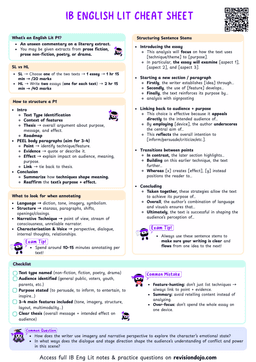Model Answer: 20/20 IB English HL Essay (HLE)
LOI: How does Carol Ann Duffy give female characters from Greek mythology a voice to challenge gender roles in their relationships in The World’s Wife?
Essay Outline
- Introduction (150–200 words)
- Purpose: Introduce Duffy’s feminist lens and her poetic reimagining of myth.
- Text, Author, and Context: The World’s Wife (1999) by Carol Ann Duffy reinterprets myth, history, and literature from a female perspective, often drawing from Greek mythology and patriarchal narratives.
- Thesis: Duffy gives voice to mythological women to challenge the gender roles that define them as obedient, silent, or secondary in their relationships.
- Line of Inquiry: How does Duffy use poetic voice, imagery, and structure to critique traditional portrayals of women in relationships and empower female characters with autonomy?
- Roadmap: This essay will explore how Duffy reclaims the voices of Galatea, Penelope, and Eurydice to critique objectification, redefine marital fidelity, and reject patriarchal romanticism.
- Body Paragraph 1: Reclaiming Objectified Women in Pygmalion’s Bride
- P (Point): Duffy challenges the glorified male fantasy of the ideal woman by giving Galatea a voice and turning her from object to agent.
- E (Evidence): “Cold, I was, like snow, like ivory.” / “Screamed my head off. All an act.”
- E (Explanation): Similes suggest lifeless purity, qualities Pygmalion desires. The metaphor of stone is later revealed as strategic resistance. Galatea’s false performance of pleasure is her act of rebellion.
- L (Link): By reclaiming her body and voice, Galatea undermines the notion that women should conform to male desires, asserting her autonomy through subversive performance.
- Body Paragraph 2: Subverting the Loyal Wife Trope in Penelope
- P (Point): Duffy reconsiders Penelope not as a passive and faithful wife, but as a self-determined woman who finds empowerment through creativity.
- E (Evidence): “At first, I looked along the road hoping to see him saunter home.” / “I sewed a girl.” / “licked my scarlet thread.”
- E (Explanation): “At first” signals emotional evolution. Embroidery shifts from diversion to self-definition. The metaphor of sewing becomes an act of control and identity formation. Colour symbolism in “scarlet” conveys strength, passion, and autonomy.
- L (Link): Duffy reframes Penelope’s relationship not as a space of waiting, but as one of personal growth, challenging the narrative that women’s value lies in loyalty to men.
- Body Paragraph 3: Rejecting the Role of the Muse in Eurydice
- P (Point): Duffy critiques the myth of female silence and dependence by portraying Eurydice as rejecting the narrative constructed by Orpheus.
- E (Evidence): “Girls, I was dead and down in the Underworld.” / “He’d been told / he could have me back / but only if…” / “I’d rather speak for myself.”
- E (Explanation): Eurydice’s direct address establishes her voice and audience. Her sarcasm and independence contrast with her original voiceless portrayal. The rejection of archetypal labels (“Beloved, Dark Lady”) shows Duffy’s challenge to romantic idealisation.
- L (Link): Eurydice reclaims her identity by refusing to be “saved,” thereby rejecting both male authorship and the gendered expectations placed on her in the relationship.
- Body Paragraph 4: Critique of Patriarchal Mythmaking Across All Texts
- P (Point): Across all three poems, Duffy critiques the systemic marginalisation of female voices in myth and highlights the emotional cost of these power imbalances in relationships.
- E (Evidence): Galatea: “All an act”, Penelope: “I sewed a girl”, Eurydice: “I’d rather speak for myself.”
- E (Explanation): Each woman redefines her identity through speech and creative autonomy. These recurring moments of self-assertion connect them in a broader feminist critique of how traditional myths uphold male dominance and silence female experience.


